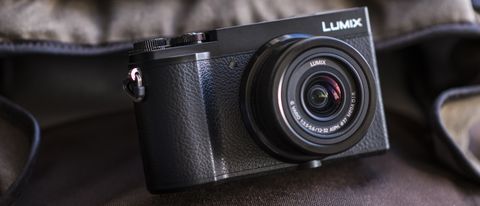Perché puoi fidarti di TechRadar
Performance
- Capable of shooting at up to 9fps
- Solid multi-zone metering system
- Power Save mode extends battery life to 900 shots
While it's not designed to be an action camera, the Lumix GX9 can shoot at up to 9fps, but this drops to 6fps if you want continuous focusing as you shoot – and of course you've got the option to use the GX9's 4K Photo mode, which can shoot a sequence of images at 30fps, allowing you to then extract a single 8MP frame from the footage.
The Lumix GX9 uses the 1,728-zone metering system that's in Panasonic's other current mirrorless cameras. As we've found in the past it's a very solid system, which can be safely left to its own devices in most situations. Like other systems it does tend to underexpose high-contrast scenes, but this can be easily corrected if desired using the dedicated exposure compensation dial.
While the GX9's built-in image stabilization system might not offer quite the impressive 6.5-stop compensation of the system in the G9, the 4-stop, 5-axis system works very well – we found that we could happily shoot at 1/8 sec (and in some instances even slower) and still achieve pleasingly sharp shots with either the 12-32mm or 8-18mm lenses we were using.
The electronic viewfinder (EVF) is good, but not great. As we've touched upon, the aspect ratio is a little at odds with the sensor format, so it's a bit more cramped than it needs to be for stills shooting. And while some will love the 90-degree tilt facility of the viewfinder, it's something we can't get too excited about – if you're going to be shooting at waist level, the tilting rear screen is a much better option.
A problem not unique to the Lumix GX9 is the relatively modest battery life of 260 shots (250 shots using the EVF). A trade-off for having a compact body is the limited size of battery you can squeeze in, although that number is 90 shots less than Fujifilm's equally compact X-E3. Panasonic is obviously aware that this is an issue, as the GX9 features a power-saving mode that can eke out 900 shots from the battery. It does this by putting the camera into sleep mode after it's been inactive for one second, with a half-press of the shutter release required to wake the camera.
Image quality
- ISO200-25,600 (expandable to ISO100-25,600)
- No optical low-pass filter
- Pleasing color reproduction
The absence of an optical low-pass filter means the Lumix GX9's 20.3MP Micro Four Thirds sensor is capable of capturing very fine detail. While the smaller sensor could be seen to be a disadvantage compared to the larger ones in rival APS-C cameras, at lower sensitivities you'll be hard pushed to spot the difference in images.
As we saw with the G9, Panasonic has made good strides in the area of color rendition, and the Lumix GX9 produces natural-looking JPEG files with faithful colors. If you want to shoot mono images without having to spend too much time on editing, the new L.Monochrome photo style is a welcome addition.

Click here to see the full-size image

Click here to see the full-size image

Click here to see the full-size image

Click here to see the full-size image

Click here to see the full-size image

Click here to see the full-size image
The Lumix GX9 delivers a very solid performance when it comes to image noise. At low sensitivity settings images are nice and clean, with only a hint of luminance (grain-like) noise visible at mid-range sensitivities if you inspect files closely.
At ISO1600/ISO3200 luminance noise becomes a bit more of an issue, while chroma (color) noise also starts to creep into shots. At ISO6400 noise is noticeable, but detail still holds up well in raw files; we'd avoid shooting at ISOs above this.
If you're shooting JPEGs, the noise-reduction algorithm is a little too zealous for our tastes; noise is certainly reduced, but detail is sacrificed a bit too much, with high-sensitivity images looking 'waxy' in places.
As for dynamic range, there's plenty of flexibility at low sensitivities, allowing you to recover a decent amount of shadow and highlight detail from raw files. That flexibility is diminished though as you increase the ISO, with more noise encroaching in shadow areas.
Current page: Performance and image quality
Pagina precedente Build, handling and AF Pagina successiva Verdict and competitionNato nel 1995 e cresciuto da due genitori nerd, non poteva che essere orientato fin dalla tenera età verso un mondo fatto di videogiochi e nuove tecnologie. Fin da piccolo ha sempre esplorato computer e gadget di ogni tipo, facendo crescere insieme a lui le sue passioni. Dopo aver completato gli studi, ha lavorato con diverse realtà editoriali, cercando sempre di trasmettere qualcosa in più oltre alla semplice informazione. Amante del cioccolato fondente, continua a esplorare nuove frontiere digitali, mantenendo sempre viva la sua curiosità e la sua dedizione al settore.
